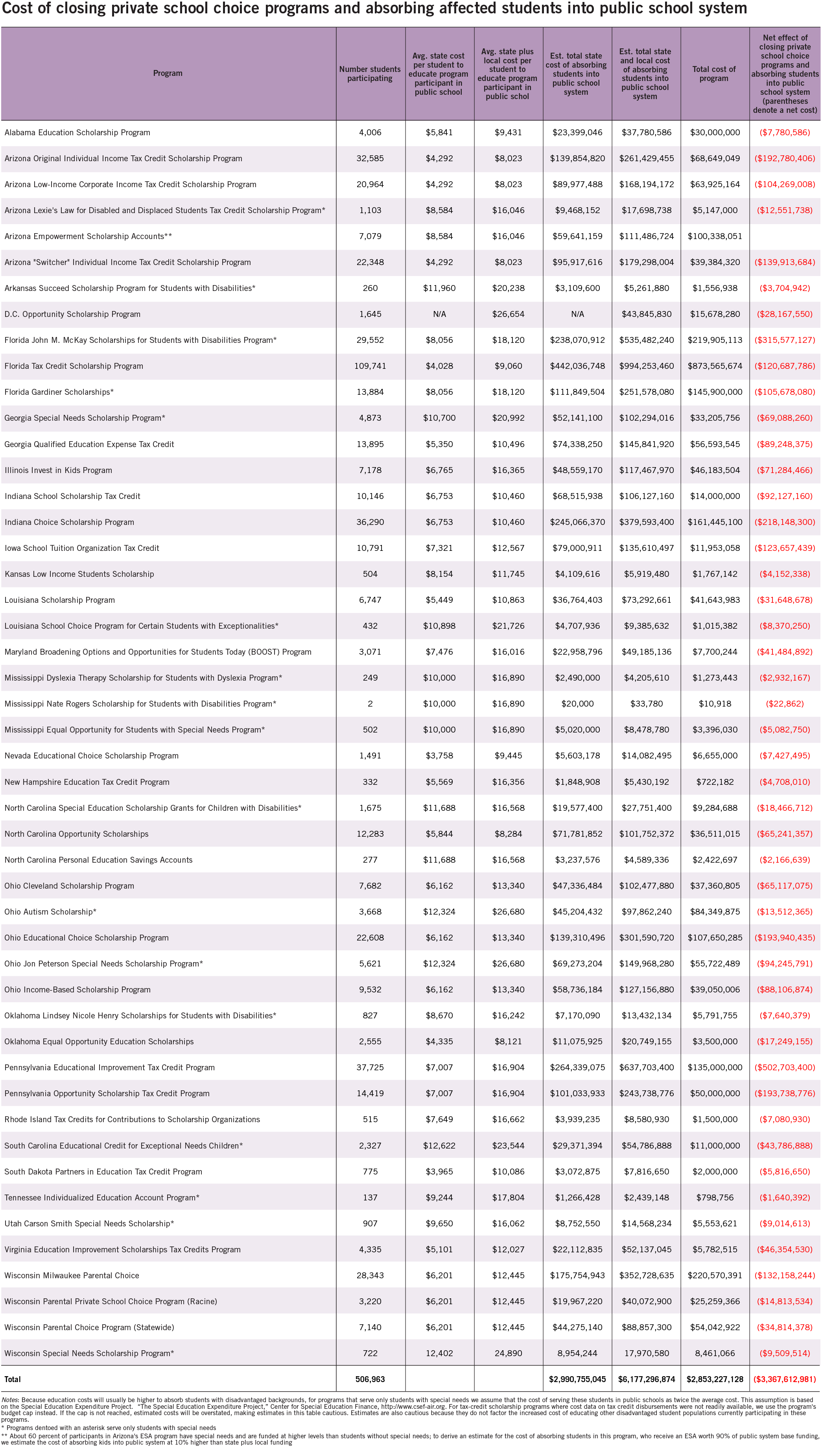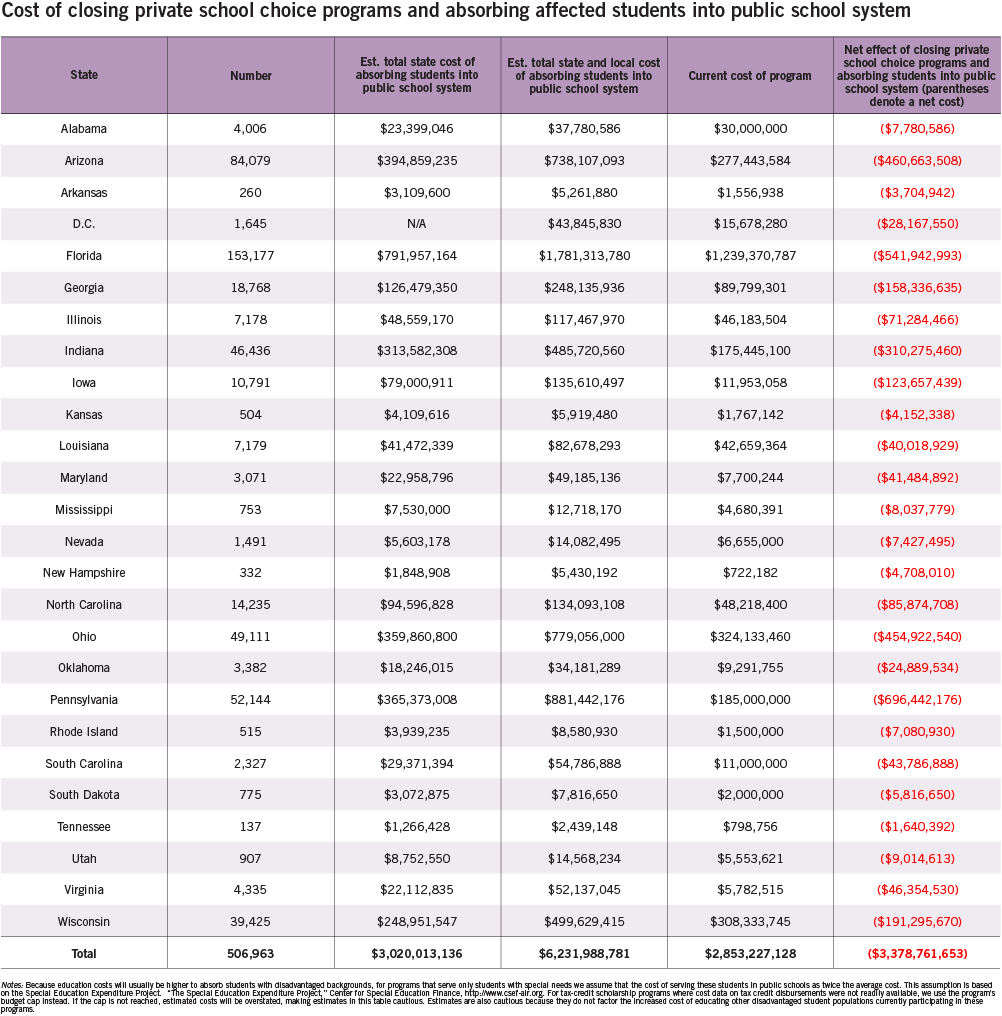K-12 Fiscal Relief in the Aftermath of COVID-19
K-12 education historically has been insulated from recessions, but the fallout from COVID-19 will strain state and district budgets and leave lawmakers and other public officials struggling to figure out financial solutions for years to come.
Policymakers will be hard-pressed to find solutions to these challenges, but the answer is not growing the traditional system, which can occur during recessions as families with children enrolled in private schools pull them out for financial reasons. In areas hit particularly hard by the Great Recession over a decade ago, private school enrollment on average declined by 40 percent. The cost of absorbing these students back into the public school system comes with a hefty price tag for taxpayers and strain on schools and teachers themselves as costs increase and class sizes grow.
Fortunately, policymakers can rely on one source of fiscal relief: educational choice. These programs are publicly funded at levels typically way below the cost of traditional public K-12 schools. They generate savings for state and local taxpayers—on average more than $3,000 for each student participating in them. Cumulatively, this represents more than $6 billion in savings since the programs’ inceptions.
Yet, at a time when policymakers should embrace programs that offer relief to state and district budgets, some states face efforts to limit or eliminate educational choice programs via legislative or legal means. In other states, programs are set to sunset soon.
What would happen to the public K-12 system, and taxpayers, if state lawmakers or courts closed private school choice programs, particularly in light of the billions in tax revenue shortfalls they are expecting?
To help answer this question, we analyzed 48 school choice programs in 26 states, including education savings accounts programs, voucher programs and tax-credit scholarship programs to estimate the cost to state and local taxpayers.
The United States spends more than $700 billion per year on K-12 education (nearly $14,000 per student); educational choice programs currently only cost about $2.9 billion. The cost to absorb those students back into the public school system, however, would be $6.2 billion. Hence, the net effect of closing states’ existing private school choice programs and moving those students back into the public school system would be more than $3.3 billion.


These costs could really add up at the state level, especially during a post-COVID-19 recovery period when every dollar is going to count and where every state budget is going to be extremely strained.
Despite this, New Hampshire recently rejected a bill aimed at repealing the state’s Education Tax Credit Program. Had opponents successfully eliminated this program and absorbed those students into public schools, public K-12 costs would have increased by almost $5 million.
While New Hampshire was successful in preserving educational opportunities for many of its families, programs in other states are being threatened.
Two lawsuits have been filed in Tennessee threatening to close the Individualized Education Account (IEA) Program. Currently 137 students participate in the program. The price tag to educate these students in public schools would be $1.6 million higher than the cost of the IEA program.
Arizona’s programs have weathered numerous efforts to repeal or limit them. This year, Save Our Schools Arizona has been fighting tooth-and-nail to prohibit the state’s Empowerment Scholarship Accounts program from expanding. The state’s five private school choice programs provide significant fiscal relief, however, and should be lauded during this recession not only for providing families an opportunity to find the type of education they deem best for their children, but also for providing fiscal relief for its public school system. Without these choice programs, state taxpayers would pay $460 million more to educate participating students in the public school system.
In Virginia, a bill was introduced to repeal the Education Improvement Scholarships Tax Credits Program, but hearings have been postponed until next year. Closing the program and absorbing its scholarship students would cost taxpayers $46 million.
Illinois and Mississippi both have programs that face sunsets. Mississippi’s Equal Opportunity for Students with Special Needs Program will stop this year; Illinois has a couple years to decide whether its Invest in Kids Program will continue. The cost of absorbing these students into their respective public school systems would be more than $71 million for Illinois taxpayers and $8 million for Mississippi taxpayers.
Although costs are important, let’s not lose sight of what matters—outcomes for students, families and communities.
Private school choice research overall leans positive. These programs improve educational attainment outcomes for students who participate in them. Parents are more satisfied when they exercise choice, and they have more direction over their children’s education. These programs also benefit communities by improving racial integration and civic outcomes such as students’ tolerance for the rights of others, civic knowledge and participation, and volunteerism. Finally, they benefit students who choose to remain in their district schools when it comes to test score gains.
Imagine what would happen if policymakers promoted the reduction or elimination of educational opportunity for families, particularly low-income families. Many public schools would end up with children who do not want to be there. Classes would grow larger and end up with many mismatches between children and their educational setting. And countless families will become frustrated if policymakers pull the rug out from under them.
In the wake of COVID-19, reactions to the crisis have run the gamut from the sensible—offering needed advice to school officials about how to deal with looming budget challenges—to the nonsensical—like this call for a wholesale ban on homeschooling.
COVID-19 has affected all of us individually, and it will continue to unfold across every sector of our society. K-12 education is no exception. As policymakers look for solutions in the aftermath of the crisis, it would behoove them to embrace the positive role—financially and socially—that educational choice can play.



